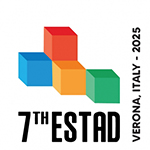Speaker
Description
The dry slag granulation process developed by Tenova represents a significant advancement in the valorization of Ladle Furnace (LF) slag, contributing to circular economy principles and sustainable steelmaking. Unlike traditional water-based cooling methods, which present environmental and operational challenges, Tenova's dry granulation technology employs a forced air stream to achieve ultra-rapid slag solidification. This process effectively prevents dust generation, reduces greenhouse gas emissions, and enables the recovery of both mineral and metallic fractions. The process, based on Tenova patent EP4100551A1, involves pouring molten LF slag into a controlled air stream, causing very fast cooling and solidification. The flexibility of the plant layout and operation allows to obtain granulated material with different granulometry and different fraction of crystalline and amorphous phases up to 100%. This opens the possibility different applications in construction and cement industries. Laboratory experiments and industrial pilot and demonstration trials at different steelworks demonstrated the system's efficiency, confirming the expected material granulometry and morphology. The tests validated the CFD simulations that provided crucial insights for scaling up the process to full industrial implementation.
Key benefits of Tenova’s dry granulation process include: (i) elimination of water usage and associated wastewater treatment, (ii) reduction of hazardous emissions, including sulfur compounds, (iii) improved handling of slag by converting it into a granular, reusable product, and (iv) enhanced resource efficiency through the recovery of residual metals.
Following the successful demonstration trials, feasibility studies and engineering designs have been developed for industrial deployment. This innovative approach offers a viable, sustainable alternative to conventional slag disposal, reinforcing steel industry's commitment to environmental responsibility and material circularity.
Tests of material with final users in the construction sector are on-going to define the more promising valorization paths, moreover the extension to EAF slag in under evaluation.
